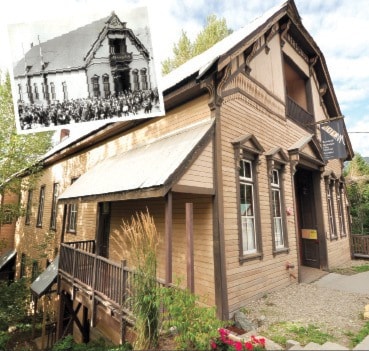Alicia Wallace
Rossland News
The Lower Columbia Community Development Team and the Rossland Council for Arts and Culture are both recipients of major funding from the Columbia Basin Trust.
The Lower Columbia team will receive $600,000 over the next two years, while the Rossland Council for Arts and Culture has been granted $300,000 that will make the renovation and restoration of the Rossland Miners’ Union Hall one step closer to reality.
“We are very grateful for this show of support from the Columbia Basin Trust,” said Renate Fleming, president of the arts council. “With this $300,000 contribution, we now have 70 per cent of the required funds in place for the project.”
For the arts council, which has been dreaming of turning the fourth floor attic space of the Miners’ Hall into a functional arts and recreation programming space for nearly 20 years, the funding will give the project momentum for a hopeful construction date in 2016.
“The intent of the project is to stabilize the condition of the Miners’ Hall, restore the façade to its historic form and create new spaces inside the existing building that will support arts and community activities,” explains Fleming. “When the Western Federation of Miners Local 38 built the Hall in 1898, they had plans to develop the attic into usable space. Finally, over 100 years later, we are going to make it happen.”
Currently the fourth floor attic is an undeveloped spaced used predominantly for storage. The plans for the fourth floor development include a green room for performers, storage for the Gold Fever Follies props and costumes, and a mid-sized main room that would be used for art classes and recreation programs.
When the city announced they would be doing much needed upgrades to the roof and siding of the building using Miners’ Hall designated reserve funds, the arts council knew this was the time to embark upon the much dreamed of fourth floor renovation, Fleming said.
In addition to the city’s planned upgrades to the roof and siding and the arts council’s renovations to the fourth floor, the project has expanded to include restoration to the façade and reconstruction of the entry courtyard.
“Our plans for the attic renovation included reopening the balcony that overlooks Columbia Avenue,” explains Larry Doell from arts council. “While looking at some historical photos, we realized that the design of both the balcony and the roof line had been substantially changed from the original.”
The planned façade restoration intends to rebuild both the balcony and roofline to more closely resemble the original High Victorian design.
The Lower Columbia team sought input from the community on how to spend over half a million dollars in grant funds they received from the Trust. As a result, the organization drafted the Lower Columbia priorities plan.
“The valuable input from the community has helped us create the plan that will guide the allocation of $600,000 in funding for the Lower Columbia which includes Rossland, Warfield, Trail, Montrose, Fruitvale and Areas A and B over the next two years,” said a committee spokesperson.
The top priorities identified in the plan are: economic and tourism development, local governance, recreation, community services, and arts, culture and heritage. Over the coming months the committee will be meeting with interested stakeholders to identify possible partners and projects. The full plan is available online at lccdts.com.
